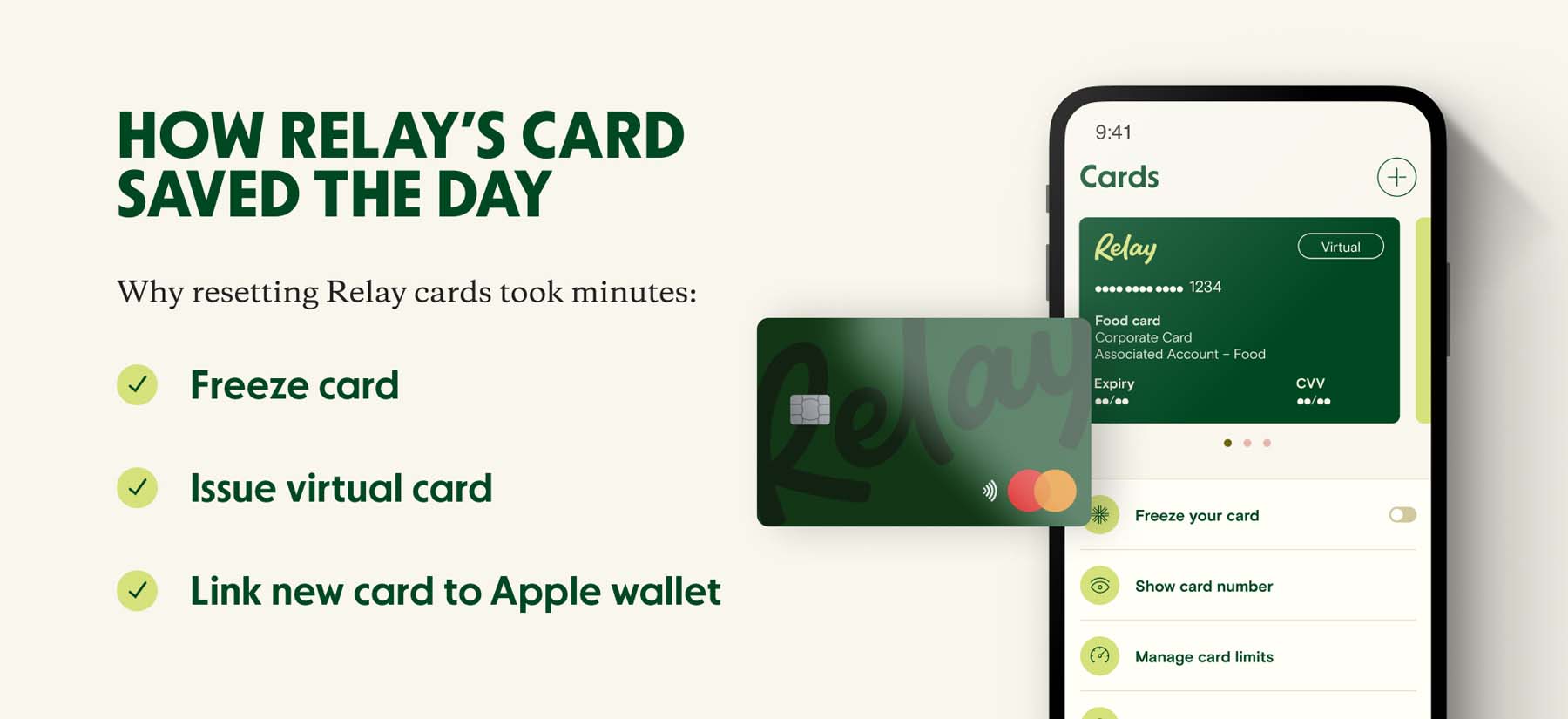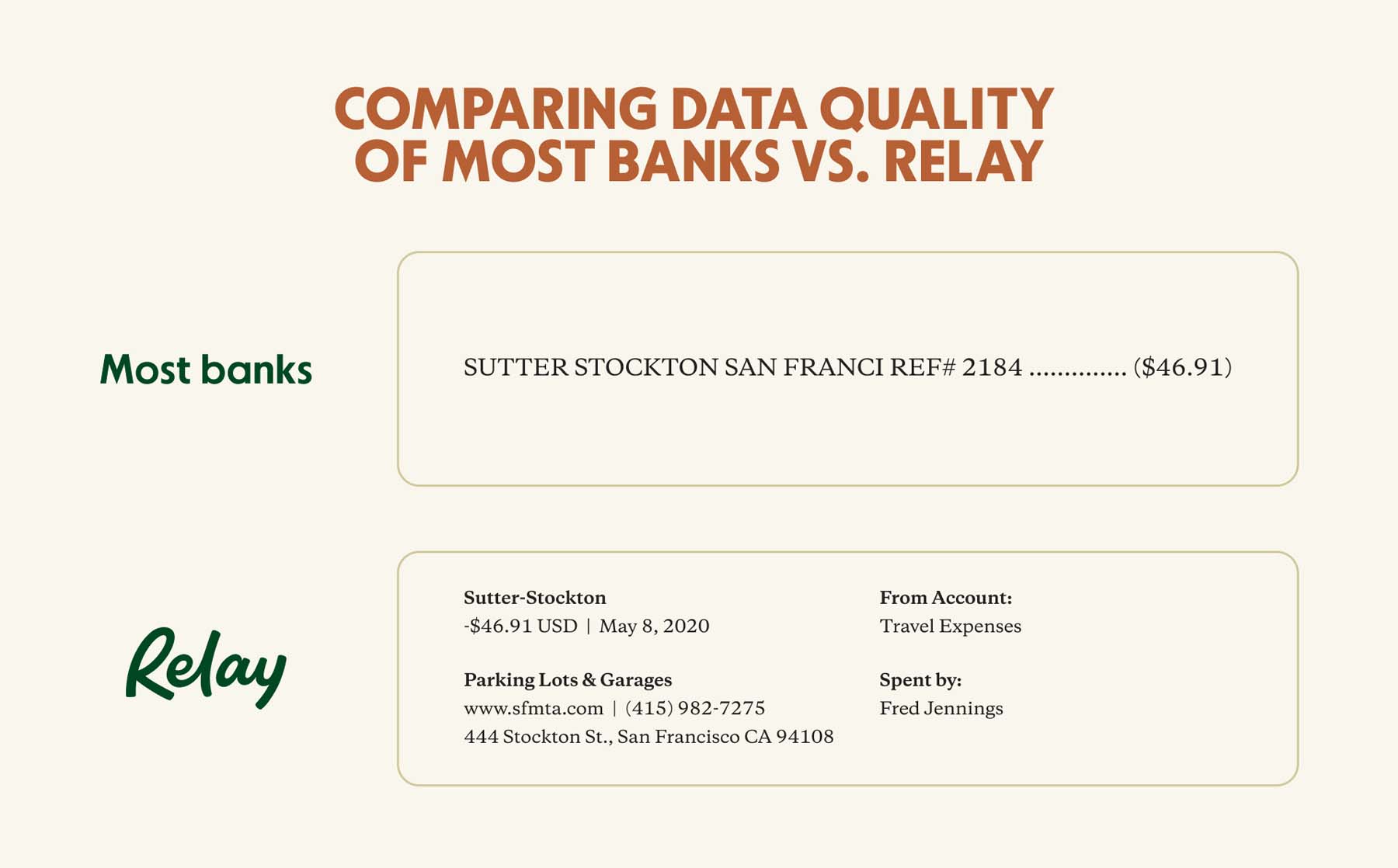And one of the biggest choices you’ll make will be whether to use a digital bank 💻 (also known as a neobank) or a traditional, brick-and-mortar bank. 🏛️
At Relay, we have a unique perspective on business banking. As an online banking platform ourselves, we get a first-hand account of the issues our users experience with banking and what drives them to go digital. The shift to digital banking is an accelerating trend: According to Statista, as many as 65.3% of Americans will use digital banking in 2022.
Let’s take a close look at why you might choose a neobank vs. a traditional bank, and how it could impact your business.
The changing banking industry
Up until the financial crisis of 2007-2009, it would’ve been hard for customers to distinguish one bank’s services from the next. You might stick with a bank due to better interest rates, or you might be loyal to a local credit union because of great in-person customer service. But for the most part, banks all looked the same to the end user. 🤷
But in the early 2010s, a new type of financial institution showed up: the neobank. Entirely online and powered by software, neobanks were able to offer a much better experience to their customers compared to brick-and-mortar incumbents.
When the COVID-19 pandemic hit and communities shut down in early 2020, people were forced to find virtual alternatives to manage their everyday lives. Thus, the adoption of online banks accelerated.
So, what exactly is and isn’t a “neobank”?
What is a neobank?
A neobank, or digital bank, is a bank without branches that operates completely online. Neobanks, sometimes called “challenger banks,” combine banking services with financial software to deliver a robust yet simple user experience with helpful business integrations.
It’s important to note that most neobanks aren’t technically considered full-fledged “banks” due to the barriers restricting banking licenses. Instead, they partner with “Banking as a Service” (BaaS) providers to offer financial services like FDIC-insured checking accounts, money transfers, and withdrawals. For example, Relay partners with Thread Bank, enabling every account to be FDIC-insured so you can be confident that your money is protected.
https://www.youtube.com/embed/6WPlGbIbjrQ
Neobank FinTech (financial technology for short) gives customers features that traditional banks simply don’t offer. For instance, Relay offers free business accounts, 💰detailed transaction data, 📊 direct API integrations into accounting software, 🧮 mobile banking, 🌐 lower fees on currency conversion 💱, and advanced features that let you manage and pay bills directly from your account. 💵 Sounds comprehensive, doesn’t it? That’s because it’s built from the ground up to truly serve the needs of business owners.
Now, let’s compare this to traditional banking.
What is a traditional bank?
A traditional bank is a financial institution that primarily operates from a physical location. While some traditional banks offer limited online banking features, most still rely on physical branches to solve your banking needs. A traditional bank will have branches located throughout the country to help with this, and many will also offer their own branded ATMs. 🏧
Traditional banks hold their own banking licenses and are fully chartered. Moreover, they tend to offer a full suite of financial services — from checking accounts to debit and credit cards, lending, credit reporting, and countless other services. However, all this comes at a cost, and customers can expect to pay a premium for the range of services.
Differences between neobanks vs. traditional banks
The difference between neobanks and traditional banks is that neobanks operate completely online, offer no-fee accounts, and bundle financial software with financial services; whereas traditional banks require you to visit a physical branch, have high account fees, and focus mostly on offering as many financial services as possible in one place.
Let’s take a look at these key differences in more depth.
Digital vs. traditional banks comparison chart
Here’s how the two types of financial service providers stack up against each other and the top differences between the two.
| Digital bank* | Traditional bank |
|---|---|---|
Open an account remotely | ✅ | ❌ |
No account fees | ✅ | ❌ |
No minimum balance requirements | ✅ | ❌ |
Multiple free checking accounts | ✅ | ❌ |
Multiple physical and virtual debit cards | ✅ | ❌ |
Payments and deposits via ACH, wire and check | ✅ | ✅ |
Cash deposits | ❌ | ✅ |
Secure role-based logins for multiple team members | ✅ | ❌ |
Direct integrations with accounting software like QuickBooks Online and Xero | ✅ | Uncommon |
Detailed transaction data | ✅ | ❌ |
Advanced accounts payable features | ✅ | Uncommon |
Mobile banking | ✅ | Uncommon |
Large ATM network | ✅ | ✅ |
Physical branches | ❌ | ✅ |
Customer service | Email, phone, and chat | Phone and in-person |
Financing | Uncommon | Common |
Credit cards | Uncommon | Common |
Savings accounts | Uncommon | ✅ |
FDIC insurance | ✅ | ✅ |
* Exact features may vary from platform to platform. For the purpose of this comparison, features available to Relay customers are used as a stand-in for digital banking.
Next, we’ll dive deeper into some of the major differences.
Opening an account
Let’s say you need a business checking account. Your experience opening an account will be very different depending on if you go with a traditional bank or a digital platform like Relay.
With Relay, as long as you have all of the required documents on hand, you can apply for an account online in about 10 minutes. 🏃💨
Opening an account with a traditional bank, on the other hand, is much more time-consuming. While some large banks are starting to offer an online application process, the overwhelming majority will require you to visit a branch in-person to start your application.
Customer service
The next major difference between digital and traditional banking is customer service. To state the obvious: customer service for a traditional bank mostly happens in person, whereas digital banking offers online support. But there’s more to it.
Many business owners are now switching from traditional to digital banking because digital platforms can offer more responsive and comprehensive customer service. For example, while Relay's customer support is available by phone during regular business hours (9 a.m. ET - 5 p.m. ET), you can also reach Relay outside of regular hours by email and chat support.
And much of the time, digital banking actually gives you enough control to resolve any questions so that you don’t have to call on customer service in the first place.
Madeline Pratt's story is a good example of why having more direct control over your banking makes your business more resilient.
When Madeline uncovered employee fraud at her firm, she was able to lock down her Relay cards and issue new ones on her own — without having to wait on hold with customer service. It took only a few minutes. ⏳ Solving the same issue through her traditional bank, however, took Madeline over a week. 😥
Account fees
It’s hard to talk about digital banking without talking about fees — or rather, lack thereof. Entering the market with a “freemium” business model, challenger banks have set a new standard for how much service businesses can expect before they get charged banking fees.
Unlike the hefty maintenance fees and hidden costs associated with traditional banks, most neobanks have either zero or close-to-zero fees. 😍 For example, you can bank with Relay without paying any account fees, overdraft fees, or having to hold a minimum balance.
On the other hand, traditional banks vary drastically when it comes to account fees and minimum balance requirements. Large banks like Chase and Bank of America charge upwards of $15 to $30 a month for each account unless you meet strict minimum account balances. Even then, you could be blindsided with hidden charges for using non-branded ATMs, transferring money, and wiring funds.
Data and integrations
Another significant difference between neobanks and traditional banks is the emphasis on integrations with other financial tools. If you’re opening a business banking account, chances are that you’ll want to connect your bank feed with your accounting software (like QuickBooks Online or Xero). With Relay, you get direct API integration into your accounting software. You also get ultra-detailed data about each transaction so you know exactly what happened with each purchase at a glance. All in all, this adds up to much speedier bookkeeping and less hassle for your business.⚡
Most traditional banks, on the other hand, are still catching up to how digital businesses operate, what kind of data you expect as a business owner, and what integrations you need to automate your business's operations. Banking with a traditional institution could mean a lot of work to track down the story behind each transaction, and having to reconcile your bank statements manually. 😵💫
Collaboration
Digital banking and traditional banking were designed with different users in mind, which can have a big impact on your workflows as a business. Built at a time when all banking was done in person, traditional business banks have just one person in mind: the business owner. But businesses have multiple team members, many of which may need access to banking.
Digital banking — Relay especially — is built from the ground up with multiple users in mind. 🤝 Unlike traditional banking, Relay, for example, lets you invite multiple people to your account, manage their permission levels, and collaborate securely from anywhere in the world.
Accounts payable automation
Finally, digital banks take the edge when it comes to advanced accounts payable management features. While some traditional banks offer basic AP functions, a platform like Relay lets you manage and pay bills without ever leaving your account. 🧑💻
You can import unpaid bills directly into your banking account, set single and multi-step approval workflows, pay bills from your Relay account and sync everything back to your accounting software.
Advantages and disadvantages of neobanks and traditional banks
There are some major differences between neobanks and traditional banks. So, what’s better for you? Let’s summarize the pros and cons of digital and traditional banking.
💻 Pros and cons of digital banking
Neobanks win out when it comes to account fees, convenience, integrations, and collaboration features. If that’s what you’re looking for, it may be time to change business banks.
👍 Pros of digital banking
Low fees: Most neobanks offer no-fee bank account options with low or no minimum balance requirements.
Multiple checking accounts: Many neobanks offer multiple checking accounts for free, which lets you allocate funds into expense and reserve accounts.
Online application: Easily open an account in minutes in the comfort of your own home or office, without having to visit a physical bank branch.
👎 Cons of digital banking
No physical branch: For those who prefer face-to-face customer support, not having a physical branch to visit can be a disadvantage.
Features vary: Neobank features vary from bank to bank. You’ll need to do some research to find the best solution for you. A good place to start is our guide to the best neobanks.
🏛 Pros and cons of traditional banks
While traditional banking may not offer the same conveniences as digital banking, they do offer comprehensive banking services — meaning you can likely get everything you need in one place. Moreover, if you value face-to-face customer service above all else, a traditional bank might be the better choice.
👍 Pros of traditional banks:
Face-to-face customer service: For those who prefer to visit a branch location, a traditional bank is the best option.
Access to savings accounts: While only some neobanks offer small business savings accounts, almost all traditional banks offer them.
Investment services: Many traditional banks offer financing or investment services, which can make a difference to business owners looking for funding.
👎 Cons of traditional banks:
Have to visit a physical location: Most business owners are extremely busy, which makes taking a trip to a bank a tedious and time-consuming task.
High maintenance fees: Traditional banks typically charge monthly maintenance fees and minimum balance fees, which can stack up over time.
Lack of accounts payable features: Traditional banks don’t offer the same suite of financial products that neobanks do and only some offer a mobile app.
Poor customer service: It’s well known that traditional banks are hard to get in touch with which can be frustrating when you need to contact your bank.
Lack of convenience: Overall, traditional banks don’t have the convenience that neobanks do as you have to visit a physical location for many tasks.
Low-interest rates: While having the option of a savings account is a perk, traditional banks offer low-interest rates rather than higher interest rate neobank accounts.
➡️ Bank with Relay
The future of banking is digital — especially if you’re a business owner. With digital banking, you can cut down on fees, get better integrations with your accounting software, securely collaborate with your team, and get better visibility into how much you’re earning, saving, and spending every day.
You can get it all done with Relay. Best of all — the application takes 10 minutes and can be done completely online. If you’re looking for better banking, you can get started here!







